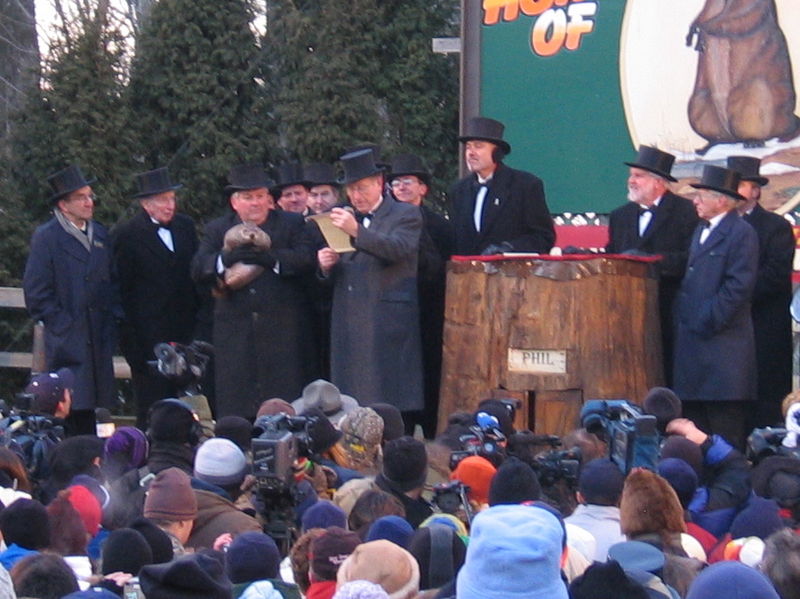Groundhogs or woodchucks, whose scientific name is Marmota monax, are large rodents known for their burrowing habits and destructive behavior. However, in the United States and Canada, Groundhog Day is a popular tradition where they used the groundhog to forecast the weather.
This traditional holiday is being celebrated on February 2 every year at Punxsutawney in western Pennsylvania. The Groundhog Day ceremony centers around a semi-mythical groundhog named Punxsutawney Phil. Different American cities also have their own special groundhogs. New York City’s official groundhog is called Pothole Pete, while Canada’s groundhog is an albino groundhog named Wiarton Willie.
Centuries ago in Europe, people watched for hibernating animals like badgers, bears, and hedgehogs, for signs of winter to end. Thousands of years ago, people in the area of Europe known as Germany believed that the badger had the power to predict when the spring will come. Since it hibernates for the winter, its coming out from the ground will be a natural sign of spring. They took it as a sign and watched the badger for them to know when to plant their crops.
According to folklore, when a groundhog emerges from its burrow on February 2 and the weather is cloudy, then spring will come early on that year. It came from the superstition that if a groundhog emerges from its burrow on this day and sees a shadow due to clear weather, it will be scared and will return to its burrow. When this happens, it means that winter will persist for six more weeks. But if it does not see its shadow because of cloudiness or if it does not retreat, then this means that spring will arrive early.
The Groundhog Day is a tradition that started as a custom among the German community in Pennsylvania since 1887. The roots of this tradition can be traced back to a Christian holiday called Candlemas Day.
Every year, on the time between the winter solstice and the spring equinox, members of the clergy blessed and distributed candles needed for the people to get through to the remaining winter days. These candles represented how long and cold the winter will be. The Germans then expanded on this concept and selected an animal which was the hedgehog as a way of predicting the weather. The tradition was that winter would continue if Candlemas Day dawned sunny and clear. But if the weather was cloudy spring would come soon.
When German immigrants started to settle in Pennsylvania in the 1880s, they adopted the custom. Unfortunately, there were not many badgers in Pennsylvania so they used the more common groundhog as a substitute for the badger. Since groundhog is common in the area, it became the popular animal for this particular weather superstition.
This Groundhog tradition remains and continues up to this day. Many towns celebrate the tradition by starting the festivities before winter sunrise. This is done so that the people will have time to watch a groundhog stepping out of a burrow. Aside from this, people celebrate with a festive atmosphere of music and food.
In Punxsutawney, their world famous and legendary groundhog Phil will emerge from his temporary home and give his annual forecast. He gives his annual forecast at the top of a tiny hill in the town called Gobbler’s Knob which is located in a rural area about 2 miles (3 km) south-east of town.
Even if it is a superstition, there is still a little bit of truth to it. In general, the winter days wherein you can see your shadow clearly are most often especially cold. That is because there are no clouds overhead to insulate the earth.

